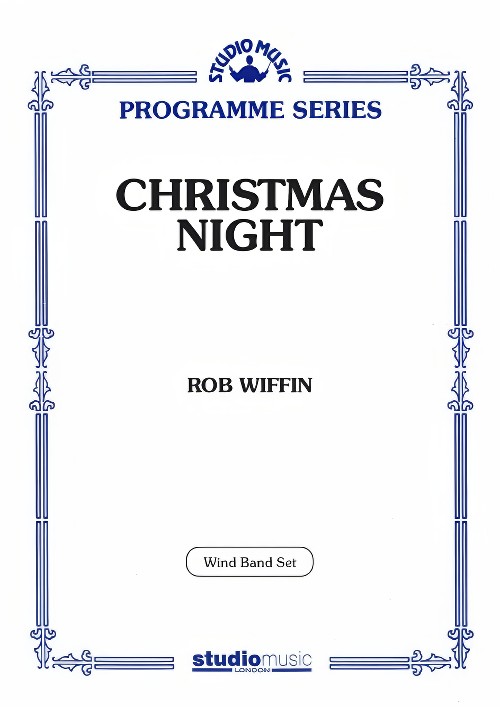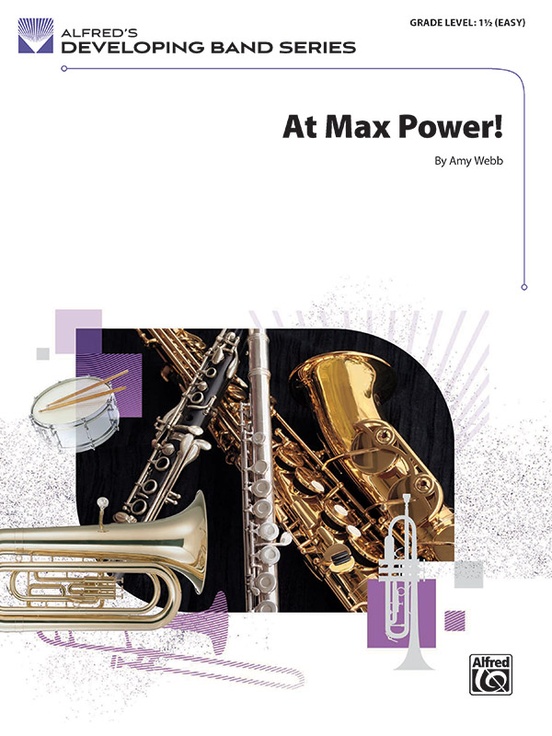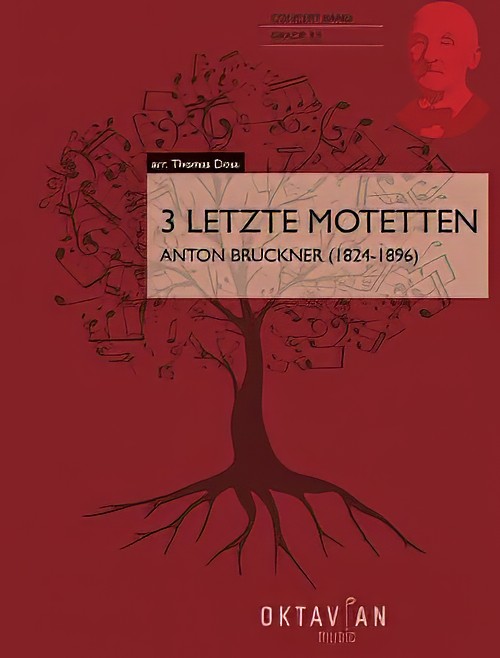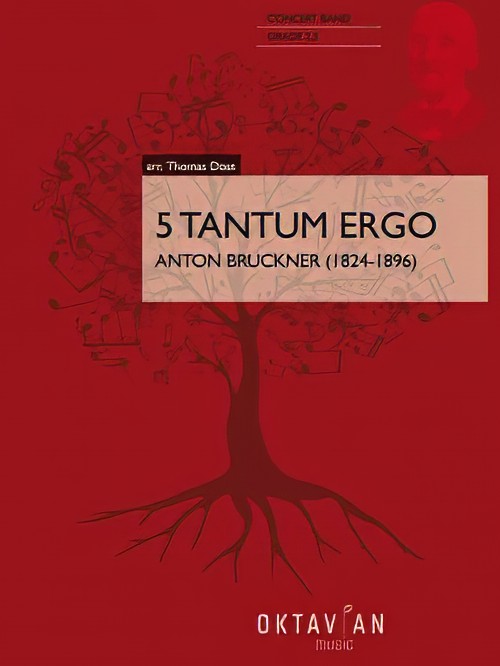Results
-
 £57.50
£57.50A Holiday Swing-Along
Featuring the holiday favorites Frosty The Snow Man; Jingle Bells and Let It Snow! Let It Snow! Let It Snow! here is a clever medley all in swing style that will brighten up your holiday concert. Easy to put together and fun to play!
Estimated dispatch 7-14 working days
-
 £57.50
£57.50Our Winter Wonderland
Band with opt. Choir - Grade 2 The winter holiday season seems to bring out songs that simply make you feel good! Here is a collection of gems arranged in an easy-flowing style that is easy to learn and a joy to perform. The band arrangement is designed to be performed with or without the choir or strings. Includes: The Most Wonderful Time of the Year, Let It Snow! Let It Snow! Let It Snow! and Winter Wonderland. 08744127 SATB: $2.25 08744128 SAB: $2.25 08744129 2-Part: $2.25 04490326 String Pak: $40.00 08744130 Accompaniment/Full Performance CD: $35.00
Estimated dispatch 7-14 working days
-
£109.99
Lpez Odero - Ferrer Ferran
Lpez Odero is a fantasy written for concert band that incorporates the folk music of the Andalusia people. It features some beautiful songs from the Cadiz province, with their fascinating Flamenco-rhythms. The person who commissioned the work requested it be dedicating it to his father, Lpez Odero, a talented clarinet player, after whom the piece is named.
Estimated dispatch 7-14 working days
-
 £92.50
£92.50Porgy and Bess (Medley) - George Gershwin
The music from the timeless masterwork Porgy and Bess has fascinated generation after generation. Oddly enough, at its premiere the critics presented mixed reaction: some calling it the pioneering work of a new folk-opera genre, and others condemning it as merely a succession of hit songs. Fortunately, time has secured its place in history. James Barnes has skillfully crafted a wonderful scoring of "I Got Plenty O' Nuttin'," "It Ain't Necessarily So," "Summertime," "Crab Man," and "Bess, You Is My Woman Now." This is Gershwin at his best! (8:30)
Estimated dispatch 7-14 working days
-
 £59.95
£59.95Christmas Night (Concert Band - Score and Parts) - Wiffin, Rob
This is an arrangement of carols associated with Christmas night. The main song in this arrangement is O Holy Night but it also includes the opening phrase of Franz Gruber's Silent Night as an accompanying motif. The music starts with some lux argentum and then two horns play It came upon the midnight clear as a prelude to the main theme. The first iteration of this beautiful Christmas song should ideally be played on the cor anglais. However, it is cued for oboe or trumpet should a cor anglais not be available.O Holy Night was composed by Adolphe Adam in 1847, originally set to a French poem, Minuit, Chretiens (Midnight, Christians) and published as Cantique de Noel.Duration: 5.00
Estimated dispatch 7-14 working days
-
 £59.95
£59.95Wheels (Concert Band - Score and Parts) - Holmes, Chris
A four movement work based on wheels! Includes:Big Dipper - the little carriage slowly climbs before hurtling off on its journey. Then another climb takes it even higher and off it goes again, even faster - the high woodwind instruments hint at the screams and shouts of the the passengers, before the carriage comes to a rest and everybody gives a sigh of relief.London Eye - the giant white wheel turns slowly and silently, taking the passengers high above London's River Thames, with views over the Houses of Parliament and the whole of the capital's skyline - breathtaking!Wagon Train - horses are pulling the heavy wooden wagons, slowly trundling across the American plains, taking the settlers to their new homes in the West.The No. 57 Bus - the bell sounds, and off the bus goes - the music changes when the bus comes to a stop to let passengers on and off - "ting ting" and off it goes again - another change in the music, another stop - a run home, and two final rings on the bell - a good trip!Duration: 9.00
Estimated dispatch 7-14 working days
-
 £11.95
£11.95Wheels (Concert Band - Score only) - Holmes, Chris
A four movement work based on wheels! Includes:Big Dipper - the little carriage slowly climbs before hurtling off on its journey. Then another climb takes it even higher and off it goes again, even faster - the high woodwind instruments hint at the screams and shouts of the the passengers, before the carriage comes to a rest and everybody gives a sigh of relief.London Eye - the giant white wheel turns slowly and silently, taking the passengers high above London's River Thames, with views over the Houses of Parliament and the whole of the capital's skyline - breathtaking!Wagon Train - horses are pulling the heavy wooden wagons, slowly trundling across the American plains, taking the settlers to their new homes in the West.The No. 57 Bus - the bell sounds, and off the bus goes - the music changes when the bus comes to a stop to let passengers on and off - "ting ting" and off it goes again - another change in the music, another stop - a run home, and two final rings on the bell - a good trip!Duration: 9.00
Estimated dispatch 7-14 working days
-
 £53.95
£53.95At Max Power! (Concert Band - Score and Parts) - Webb, Amy
It's time to show the world that your band has what it takes to be the best. Can they push to the front, give it all they've got, and sprint to the finish line? Your students have put in hard work, time, and effort to make their concert the best it can be. What better way to end your program than with this exciting piece by Amy Webb that lets them sprint to the finish line!Duration: 2.00
Estimated dispatch 7-14 working days
-
 £123.20
£123.203 Letzte Motetten (Concert Band - Score and Parts) - Bruckner, Anton - Doss, Thomas
Anton Bruckner (b. 4.9.1824, Ansfelden, d. 11.10.1896, Vienna) didn't have it easy. Throughout his life, the Austrian composer was plagued by self-doubt. Anton Bruckner came from a simple, rural background. After the death of his father, he was accepted as a choirboy at the monastery of Sankt Florian in 1837. After several years as a school assistant and his own organ and piano studies, he first worked as organist in St. Florian, then from 1855 as cathedral organist in Linz. Introduced to music theory and instrumentation by Simon Sechter and Otto Kitzler, he discovered Richard Wagner as an artistic role model, whom he admired throughout his life and also visited several times in Bayreuth. In 1868 Anton Bruckner became professor of basso continuo, counterpoint and organ at the Vienna Conservatory; ten years later court organist; and in 1891 finally honorary doctor of the University of Vienna. He was considered an important organ virtuoso of his era, but had to wait a long time for recognition as a composer. It was not until Symphony No.7 in E major, composed between 1881 and 1883, with the famous Adagio written under the effects of Wagner's death, that he achieved the recognition he had hoped for, even if he was reluctant to accept it given his inclination towards scepticism and self-criticism. Anton Bruckner was a loner who did not want to follow a particular school or doctrine. He composed numerous sacred vocal works, such as his three masses, the Missa Solemnis in B flat minor (1854), the Te Deum (1881-84) and numerous motets. As a symphonic composer, he wrote a total of nine symphonies and many symphonic studies from 1863 onwards, tending to revise completed versions several times over. Bruckner's orchestral works were long considered unplayable, but in fact were merely exceptionally bold for the tonal language of their time, uniting traditions from Beethoven through Wagner to folk music, on the threshold between late Romanticism and Modernism. Anton Bruckner composed about 40 motets during his lifetime, the earliest a setting of Pange lingua around 1835, and the last, Vexilla regis, in 1892. Thomas Doss has compiled some of these motets in this volume for symphonic wind orchestra. These motets show many characteristics of personal expression, especially Bruckner's colourful harmony in the earlier works, which is in places aligned with Franz Schubert (changes between major and minor; and movements in thirds). Later works are characterised by many components which, in addition to the expanded stature of the movements, include above all a sense of the instrumentation as an outward phenomenon and the harmony as a compositional feature that works more internally. Some aspects of Bruckner's work are the result of his long period of study, which familiarised him not only with the tradition of his craft, but also gave him insights into the "modernity" of his time in such composers as Wagner, Liszt and Berlioz. From this developed his personal standpoint, which always pursues the connection between the old and the new.Duration: 14.00
Estimated dispatch 7-14 working days
-
 £95.99
£95.995 Tantum Ergo (Concert Band - Score and Parts) - Bruckner, Anton - Doss, Thomas
Anton Bruckner (b. 4.9.1824, Ansfelden, d. 11.10.1896, Vienna) didn't have it easy. Throughout his life, the Austrian composer was plagued by self-doubt. Anton Bruckner came from a simple, rural background. After the death of his father, he was accepted as a choirboy at the monastery of Sankt Florian in 1837. After several years as a school assistant and his own organ and piano studies, he first worked as organist in St. Florian, then from 1855 as cathedral organist in Linz. Introduced to music theory and instrumentation by Simon Sechter and Otto Kitzler, he discovered Richard Wagner as an artistic role model, whom he admired throughout his life and also visited several times in Bayreuth. In 1868 Anton Bruckner became professor of basso continuo, counterpoint and organ at the Vienna Conservatory; ten years later court organist; and in 1891 finally honorary doctor of the University of Vienna. He was considered an important organ virtuoso of his era, but had to wait a long time for recognition as a composer. It was not until Symphony No.7 in E major, composed between 1881 and 1883, with the famous Adagio written under the effects of Wagner's death, that he achieved the recognition he had hoped for, even if he was reluctant to accept it given his inclination towards scepticism and self-criticism. Anton Bruckner was a loner who did not want to follow a particular school or doctrine. He composed numerous sacred vocal works, such as his three masses, the Missa Solemnis in B flat minor (1854), the Te Deum (1881-84) and numerous motets. As a symphonic composer, he wrote a total of nine symphonies and many symphonic studies from 1863 onwards, tending to revise completed versions several times over. Bruckner's orchestral works were long considered unplayable, but in fact were merely exceptionally bold for the tonal language of their time, uniting traditions from Beethoven through Wagner to folk music, on the threshold between late Romanticism and Modernism. Hymns for four-part mixed choir a cappella (1846, St. Florian) No. 1 in E flat major (WAB 41/3): Quite Slow No. 2 in C major (WAB 41/4): Andante No. 3 in B flat major (WAB 41/1): Slow No. 4 in A flat major (WAB 41/2): Slow Hymn for five-part (SSATB) mixed choir and organ No. 5 in D major: Solemnly They are simple works, completely subordinate to their liturgical use, which nevertheless already show numerous characteristics of personal expression. These small pieces were able to stand up to the harsh scrutiny of the mature master: in 1888, Bruckner subjected them to a revision in which he made only minor corrections.Duration: 11.00
Estimated dispatch 7-14 working days
